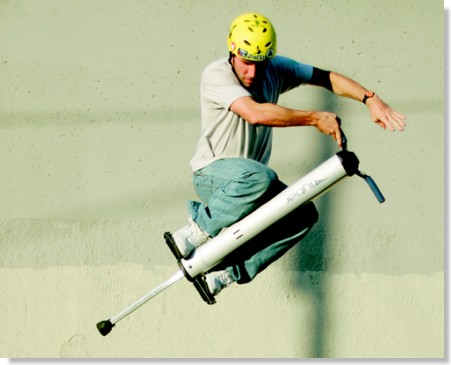The design of pogo sticks had barely changed between the time they were first patented and sold in the U.S. in 1919 to about 2000.
Inventor George Hansburg promoted the toy by teaching dancers for the famous showman Florenz Ziegfeld how to pogo. He once staged a wedding where the bride and groom bounced into wedded bliss on pogo sticks.
The Wall Street Journal reports that in 2000, Irwin Arginsky, who bought out Mr. Hansburg in 1967, was approached by Bruce Middleton, a physicist who had gotten an idea while watching his daughter on her pogo stick.
The physicist suggested a design using heavy-duty rubber bands (rather than old-fashioned steel springs) for propulsion.
Soon after, Arginsky’s company, SBI Enterprises, of Ellenville, N.Y., sold its first Flybar, which could send a rider weighing up to 250 pounds five feet off the ground.
Pogo riders today, mostly teenage risk-takers who might otherwise favor skateboarding, can bounce more than six feet in the air and perform spins and flips.
Other producers have also popped up: Mission Viejo, Calif., based Vurtego Inc., makes a stick that relies on compressed air instead of a spring and has developed a prototype with a booster that it claims can launch a rider 16 feet in the air.
A third extreme pogo model, called the BowGo, uses a strip of fiberglass that bends and recoils to provide lift. The stick is under development at Carnegie Mellon University and was born out of technology to enable robots to run.
Photo by SBI Enterprises.
